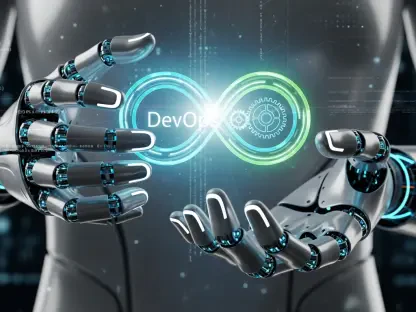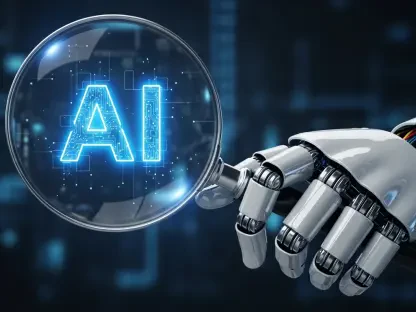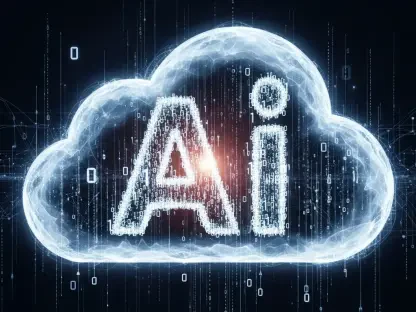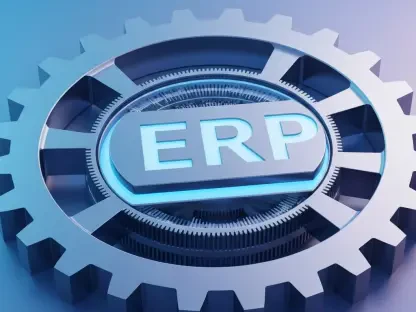Setting the Stage for a Security Revolution
Imagine a world where software vulnerabilities are detected and fixed before developers even notice them, where security is woven seamlessly into every line of code without slowing down innovation. This is no longer a distant vision but a reality shaped by AI-driven DevSecOps solutions in 2025. With cyber threats escalating in sophistication and scale—evidenced by a staggering rise in supply chain attacks by over 40% in recent data—traditional security methods struggle to keep pace with rapid development cycles. The integration of artificial intelligence into DevSecOps offers a lifeline, promising automation and precision in tackling these modern challenges. This review dives into how AI is transforming application security and software supply chain protection across the software development lifecycle.
Unpacking AI’s Role in DevSecOps
At its core, AI in DevSecOps represents a paradigm shift, embedding security into every phase of the DevOps pipeline through intelligent automation. This methodology leverages machine learning, predictive analytics, and contextual intelligence to anticipate threats rather than merely react to them. By processing vast datasets in real time, AI tools identify patterns that human analysts might miss, ensuring a proactive stance against evolving risks.
The relevance of AI in this space cannot be overstated as software complexity grows alongside threat landscapes. Modern applications, often built on intricate open-source components, demand scalable solutions that manual processes cannot deliver. AI steps in to address this gap, offering capabilities that align with the speed and dynamism of continuous integration and delivery environments, thus redefining security’s place in development workflows.
Key Features of AI-Driven DevSecOps Tools
Autonomous Vulnerability Detection and Fixes
One of the standout features of AI in DevSecOps is its ability to autonomously detect and remediate vulnerabilities with minimal human input. By scanning codebases and dependencies in real time, these tools pinpoint weaknesses and often suggest or implement fixes instantly. Performance metrics highlight their efficiency, with remediation speeds frequently measured in hours rather than days, alongside accuracy rates that minimize false positives.
This automation extends to large-scale operations, where AI can apply fixes across thousands of repositories simultaneously. Such capabilities reduce the burden on development teams, allowing them to focus on innovation while maintaining robust security. The precision of these tools ensures that even subtle flaws, often buried in complex code, are addressed promptly and effectively.
Prioritizing Risks with Contextual Intelligence
Beyond mere detection, AI excels in prioritizing security alerts based on their real-world impact. Instead of flooding teams with endless notifications, these solutions assess vulnerabilities in context—considering factors like business criticality, deployment status, and potential exploitability. This targeted approach significantly cuts down on alert fatigue, a common pain point in traditional security setups.
By focusing on high-impact issues, AI ensures that resources are allocated where they matter most. For instance, a flaw in a critical production environment receives immediate attention over a minor issue in a test build. This intelligent filtering transforms how security teams operate, fostering efficiency and sharpening their response to genuine threats.
Securing the Software Supply Chain
AI’s role in safeguarding the software supply chain is equally critical, especially given the reliance on open-source components in modern applications. These tools analyze dependencies to uncover hidden risks, such as undisclosed vulnerabilities or malicious packages, often missed by standard scans. Innovations like identifying shadow-patched flaws or providing hardened base images help establish a clean foundation for development.
Such advancements mitigate risks before they propagate through the pipeline. By offering deep intelligence on component integrity, AI empowers organizations to build trust in their supply chains. This focus on prevention rather than reaction marks a significant shift toward securing the very building blocks of software ecosystems.
Emerging Directions in AI Security Integration
Recent developments in AI for DevSecOps point to a future dominated by automation and proactive defense mechanisms. Tools are increasingly shifting from reactive fixes to predictive models that anticipate vulnerabilities based on historical data and threat trends. This evolution promises to further reduce the window of exposure for potential attacks.
Another notable trend is the emphasis on developer-centric security, integrating AI directly into coding environments for real-time guidance. Events like Black Hat USA showcase platforms that embed security checks into integrated development environments, ensuring developers address issues as they code. This seamless approach minimizes friction and fosters a culture of security awareness.
Additionally, governance of AI-generated code is gaining traction as its usage surges. Solutions now focus on tracking and securing such code to prevent unauthorized or risky implementations. This trend reflects a broader industry push toward balancing innovation with accountability, ensuring AI remains a trusted ally in development.
Real-World Impact Across Industries
AI-driven DevSecOps solutions are making tangible impacts across sectors, from tech startups to large-scale enterprise IT. In software development, these tools streamline workflows by automating vulnerability management, allowing teams to meet tight deadlines without compromising safety. Their deployment in diverse environments underscores their adaptability to varying needs and scales.
Specific implementations highlight their versatility, such as AI agents integrated into coding platforms for immediate feedback during development. In supply chain risk management, organizations leverage AI to monitor millions of dependencies, ensuring compliance and security across sprawling ecosystems. These applications demonstrate AI’s capacity to handle both granular and expansive challenges.
Unique scenarios further illustrate their value, such as managing compliance for AI-generated code in regulated industries. By providing transparency and traceability, these solutions help firms navigate complex legal landscapes while maintaining innovation. Such use cases cement AI’s role as a cornerstone of modern security strategies.
Hurdles and Constraints to Address
Despite its promise, AI in DevSecOps faces significant technical and operational challenges. Over-reliance on automation can lead to blind spots, where nuanced threats evade detection without human oversight. Additionally, the risk of shadow AI—unauthorized or untracked usage—poses governance concerns that could undermine trust in these systems.
Market and regulatory barriers also complicate adoption, as transparency in AI decision-making remains a contentious issue. Organizations must navigate evolving standards to ensure compliance while deploying these tools. The lack of clear guidelines on AI accountability further muddies the waters, requiring careful consideration in implementation.
Efforts to mitigate these issues are underway, with hybrid approaches combining AI automation with human validation gaining ground. These strategies aim to balance efficiency with critical judgment, addressing gaps in fully autonomous systems. Continued collaboration between industry and regulators will be key to overcoming these obstacles and fostering sustainable growth.
Looking Ahead at AI’s Potential in Security
The trajectory of AI-driven DevSecOps suggests deeper integration into developer environments over the coming years. From 2025 onward, advancements in predictive analytics could enable tools to foresee threats with even greater accuracy, further minimizing risks. Such progress would redefine how security operates within fast-paced development cycles.
Potential breakthroughs, such as enhanced governance frameworks for AI models, promise to address current limitations. These frameworks could standardize oversight, ensuring responsible usage across industries. As integration tightens, developers might interact with security tools as naturally as with coding assistants, blurring the lines between creation and protection.
Long-term, AI’s impact on cybersecurity and software standards could be profound, setting new benchmarks for safety and efficiency. As these solutions mature, they may drive a cultural shift, where security becomes an intrinsic part of innovation rather than an external checkpoint. This vision holds transformative potential for the entire tech landscape.
Reflecting on AI’s Journey in DevSecOps
Looking back, this exploration of AI-driven DevSecOps solutions reveals a technology that has become indispensable in fortifying application and supply chain security. Its strengths in automation, contextual prioritization, and proactive defense have reshaped how vulnerabilities are managed across industries. Yet, challenges like over-reliance and governance gaps underscore the need for balanced approaches in deployment.
Moving forward, organizations should prioritize hybrid models that blend AI’s efficiency with human insight to navigate complex threat landscapes. Investing in transparent governance mechanisms will be crucial to mitigate risks like shadow AI while maintaining trust. As the field evolves, fostering collaboration between developers, security teams, and regulators will ensure that AI continues to enhance, rather than complicate, the pursuit of secure innovation.









